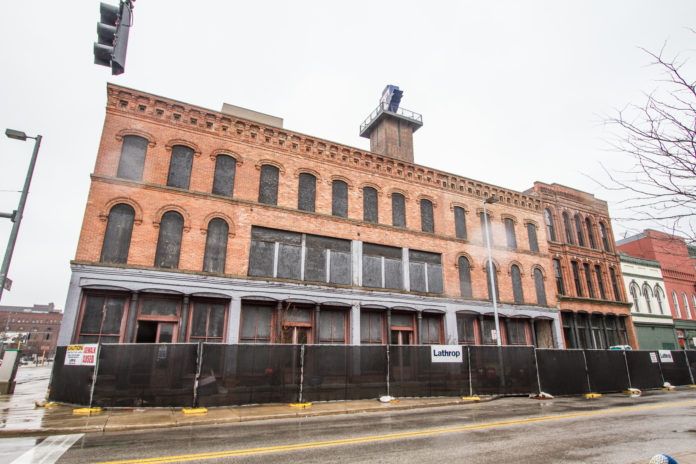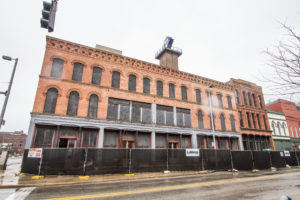
Beginning next season, Toledo baseball fans won’t have to drive to the Windy City to watch a ballgame from atop a building overlooking a stadium.

That uniquely Chicago experience will become part of the Toledo Mud Hens experience in 2016 with the introduction of Hensville, a $21 million project bringing dining, retail, office and recreational space to the area beyond right field at Fifth Third Field. Demolition and power work has already started on the project, which will rehabilitate three long-vacant buildings and a parking lot on St. Clair Street.
The project — set to debut to the public in March 2016, prior to Opening Day — is meant to evoke feelings of Wrigleyville, the festive community of bars and restaurants surrounding Wrigley Field, the ivy-covered home of the Chicago Cubs.
But Joe Napoli, president and general manager of the Toledo Mud Hens and Toledo Walleye, is not simply aiming for a mirror image of that neighborhood.
“There will be some dining options, there will be some shopping options, there will be rooftop decks, just like across the street at Wrigley,” he told Toledo Free Press in March. “We’re also adding a park just beyond right field wall, with an acre of open space, for concerts, festivals and theater in the park — all of these things that encourage social interaction.”
Speaking on Hensville in April, Napoli said the project is part of a larger revitalization effort throughout the Warehouse District.
“We want to exceed that [Wrigleyville goal],” he said. “We look at the success in the Warehouse District, and we’re really pleased and proud of all of these small businesses and individuals that have rolled up their sleeves and invested in the district. The amount of sweat equity is immeasurable. We hope that this will be yet another catalyst for another round of investment in the district.”
The project is becoming reality due to funding from a variety of public and private entities. Hensville has received funding from the Lucas County Commissioners, City of Toledo, State of Ohio’s Capital Budget, the federal government and the Local Initiatives Support Corporation in Toledo (via PNC Bank and Foss & Company). Together, these sources of funding equal about $12 million. The Mud Hens are providing the remainder of the project total.
“It’s one of those public/private partnerships that works,” Napoli said. “These programs are run by the state and federal government because they want organizations to reinvest in the downtown/urban core. Without their commitment to invest those dollars, projects like this one will never happen.
“In order for this project to happen, we really needed [them] to be active participants,” Napoli said.
He believes the project will benefit many of the stadium’s neighbors. The Mud Hens and Walleye are already the main keys to bringing people Downtown, with estimates showing they draw a combined 750,000 visitors annually.
Napoli said measuring that economic impact is a necessity.
“All of those funding sources — they do come with strings attached,” he said. “We have to produce jobs, we have to produce economic benefit, and that gets tracked, and we’ll have to submit that to the funders.
“If we’re doing our jobs well, it will mean between another 100,000-150,000 visitors to Downtown, for concerts, festivals and recreational activities,” he said. “Which should mean more business for local bars and restaurants, more people moving into apartments and condos, and more small businesses moving into Downtown. We’ll be able to measure that over the next five years.”






















